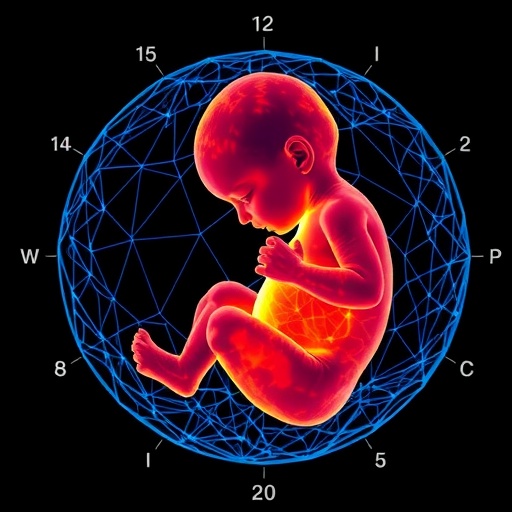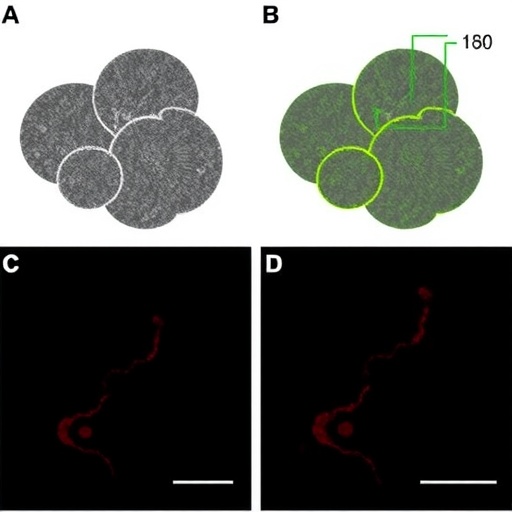In the rapidly advancing field of reproductive medicine, predictive modeling is emerging as a cornerstone for improving live birth outcomes, particularly following fresh embryo transfers through assisted reproductive technologies (ART). A groundbreaking study conducted by a team of researchers led by Wu et al. explores the integration of machine learning techniques into the creation of predictive models for these outcomes. Their study, recently published in the Journal of Translational Medicine, offers an in-depth analysis of how these models can potentially reshape the landscape of fertility treatments by enhancing decision-making processes for healthcare providers and patients alike.
The core of this research hinges on the nuanced understanding of how various factors affect the likelihood of successful births following embryo transfers. Traditional methods of prediction relied heavily on historical data and statistical regressions, often falling short due to the complexities involved in reproductive outcomes. Wu and colleagues, however, harness the power of advanced algorithms that can process vast datasets, accounting for a myriad of biological, environmental, and psychological factors influencing reproductive success. By employing machine learning, their approach significantly enhances the accuracy of predictions about which embryos are more likely to result in a live birth.
The unique aspect of this study is not only its focus on predicting outcomes but also the depth of collaborative effort from researchers hailing from diverse backgrounds. The team consisted of experts in reproductive medicine, data science, and machine learning, each contributing their distinct expertise to build a comprehensive model that could reflect the multifactorial nature of reproduction. This interdisciplinary approach has paved the way for more robust and reliable predictions, showcasing how collaborative efforts can yield innovative solutions to longstanding challenges in medicine.
Data for the study was meticulously gathered from various ART centers, featuring a diverse cohort of patients who underwent embryo transfers. This comprehensive dataset enabled the researchers to train their machine learning algorithms effectively. The volume and diversity of the data were crucial in refining the models, allowing them to identify patterns that may be invisible to conventional statistical methods. With machine learning’s ability to continually learn and adapt, the models promise not only to provide immediate prediction capabilities but also to improve over time as more data becomes available.
Furthermore, the researchers scrutinized various machine learning techniques, from basic regression models to more complex neural networks, in evaluating their predictive power. Their findings revealed that certain algorithms outperformed traditional methods significantly, providing insights that could lead to more personalized treatment plans for patients seeking ART. This aspect of the research highlights the importance of not only choosing the right model but also fine-tuning these models based on the specific characteristics of the patient population being studied.
The implications of such predictive models are vast. By equipping clinicians with more accurate predictions regarding live birth outcomes, patients can make more informed decisions about their treatment options. The transparency afforded by accurate predictive models can also demystify aspects of the fertility process, allowing patients to set realistic expectations. This can significantly alleviate the emotional and psychological burden often associated with infertility treatments, creating a more supportive environment for individuals and couples undergoing such experiences.
As the study progresses, the researchers aim to refine their models further by incorporating real-time data. This would mean that predictions could potentially evolve as treatments are administered, leading to dynamic adjustments in therapy based on patient response. Such a system could revolutionize the field of reproductive health, making it akin to personalized medicine, where treatment plans are no longer one-size-fits-all but tailored specifically to each individual’s unique biology and circumstances.
Moreover, the integration of machine learning in ART is not just limited to live birth predictions but can extend to various other aspects of fertility treatments. For instance, ongoing research could explore how these predictive analytics can inform decisions regarding the number of embryos to transfer, the ideal timing for transfer, and even the genetic profiling of embryos. This aligns well with the broader trend toward personalized healthcare, where interventions are designed around individual patient profiles rather than generalized assumptions.
With these cutting-edge advancements, it is critical to address ethical considerations accompanying such technology. As predictive modeling becomes increasingly integral to reproductive health, discussions surrounding data privacy, consent, and the psychological impacts of predictive outcomes must take precedence. While the benefits of improved live birth predictions are substantial, care must be taken to navigate the moral implications, especially concerning how this information is communicated to patients.
The advancements facilitated by Wu et al.’s study mark a significant step toward leveraging artificial intelligence to enhance healthcare outcomes. As machine learning continues to evolve, its applications within ART will likely broaden, allowing for even deeper insights into the reproductive process. This could lead not only to better clinical outcomes but also to a paradigm shift in how infertility is perceived and treated by both patients and healthcare professionals.
In conclusion, Wu et al.’s contribution to predictive modeling in ART signifies a promising leap into the future of reproductive medicine. By combining the fields of machine learning and reproductive health, the research opens up avenues for more effective, personalized treatments, potentially increasing the chances of successful pregnancies for countless families. The ongoing journey toward understanding and improving fertility outcomes using technology showcases the endless possibilities that lie at the intersection of science and compassionate care. As this research continues to unfold, the hope is that it will pave the way for a future where families are empowered with knowledge and equipped with enhanced tools to navigate their journeys toward parenthood.
Subject of Research: Predictive models for live birth outcomes following fresh embryo transfer using machine learning.
Article Title: Correction: Predictive models for live birth outcomes following fresh embryo transfer in assisted reproductive technologies using machine learning.
Article References: Wu, S., Wang, X., Liu, Y. et al. Correction: Predictive models for live birth outcomes following fresh embryo transfer in assisted reproductive technologies using machine learning. J Transl Med 23, 1064 (2025). https://doi.org/10.1186/s12967-025-07248-x
Image Credits: AI Generated
DOI: 10.1186/s12967-025-07248-x
Keywords: machine learning, predictive modeling, reproductive health, assisted reproductive technologies, live birth outcomes.
Tags: artificial intelligence in healthcareassisted reproductive technologies advancementsdata-driven fertility treatmentsembryo transfer success factorsenhancing decision-making in fertilityJournal of Translational Medicine researchlive birth outcomes predictionmachine learning in reproductive medicinepredictive modeling in IVFreproductive success prediction modelsstatistical methods vs machine learningWu et al. study on IVF





